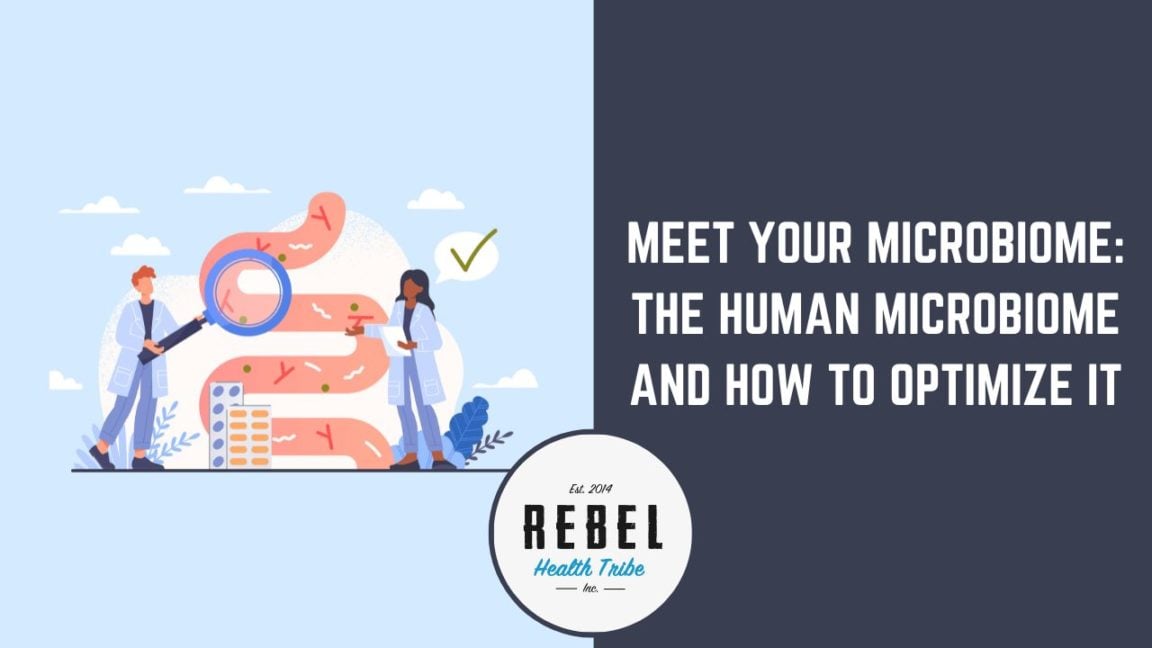
Meet Your Microbiome: The Human Microbiome and How to Optimize It
Meet Your Microbiome: The Human Microbiome and How to Optimize


Meet Your Microbiome: The Human Microbiome and How to Optimize
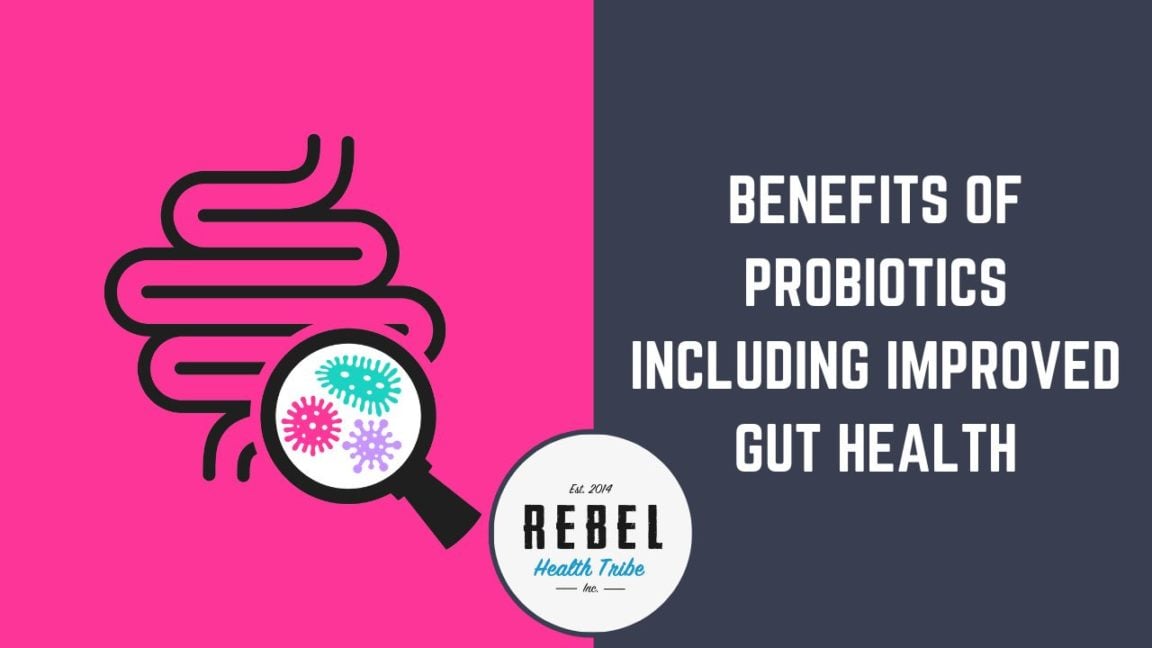
Benefits of Probiotics Including Improved Gut Health “Probiotics” has become

Gut Microbiome Health and the Gut-Immune System Connection: Part 2
The diverse community of microbes in your digestive system is truly impressive. Not only does it aid digestion, but its actions go much deeper.
The gut microbiome is an integral part of our health and wellbeing. It impacts all aspects of wellness, including mood, brain function, inflammation, and protection from disease.
In Part 1 we looked closely at the upper GI tract, including the mouth, saliva, stomach, liver, and bile. Each of these body systems interacts with the microbiome and influences what happens in the lower GI tract.
For our purposes, the lower GI tract comprises the small intestine and large intestine. Plus, we can’t talk about the lower parts of the digestive system without a discussion of poop. Feces is the final destination of all byproducts from your gut, and it can tell you a lot about how well your gut functions.
In this article, we’ll continue our journey through the lower part of the digestive system. In part 1, we left off at the point where chyme (partially digested food mixture created in the stomach) passes into the upper small intestine. Now, let’s look closer at:
The small intestine is where a lot of digestive magic takes place. Don’t let the name fool you. The small intestine is anything but small!
It’s actually a 20-foot-long hollow organ that does the bulk of nutrient digestion and absorption. Unlike the large intestine, the small intestine does not contain nearly the number and diversity of microorganisms. However, a unique microbiome in the small intestine is critical to its function and good health.
As food exits the stomach, it passes into the first section of the small intestine, known as the duodenum. There the chyme from the stomach is mixed with digestive enzymes from the pancreas as well as bicarbonate and other compounds that neutralize stomach acid. As digestive enzymes mix with chyme, absorption begins in earnest.
From the duodenum, food passes into the jejunum, where most of the broken down carbohydrates, amino acids, and fatty acids are absorbed through the walls of the intestine. After the jejunum comes the ileum, where any remaining nutrients are absorbed, especially vitamin B12 and leftover bile acids that can be recycled.
Naturally, this is a gross simplification of a highly complex and truly fascinating process. At its best, the entire digestive system is like a finely tuned orchestra. And the music you make depends on the quality of your microbiome.
Every inch of your digestive tract is home to a variety of microorganisms that collectively make up your microbiome. Not all of these microbes are guaranteed to work in your favor.
The bacteria (and yeasts, archaea, fungi, etc.) in your gut can be good or bad. Some bacteria exert positive benefits such as digestion, vitamin synthesis, immunology, protection from pathogens, and SCFA production. Examples of good bacteria include:
Other bacteria are bad news and act as pathogens, disrupting normal body function and producing unpleasant side effects. Two common harmful bacteria are:
Many other bacteria have the potential to be either beneficial or harmful. Their exact effect depends on the concentration and diversity of your microbiome as a whole.
For example, some strains of Streptococcus bacteria are benign and even helpful in the presence of a robust, balanced microbiome. However, in a state of dysbiosis, Streptococcus may grow out of control and is often implicated in SIBO. More on that in a moment.
“Protecting and nourishing your microbiome is likely the number one thing you can do to improve your health. If you cultivate a robust, diverse community of microbes, they will return the favor.”
Among the many essential microbiome functions, enhancing the immune system is high on the list. Without a diverse, happy microbiome, immunity is compromised.
A complex interaction takes place between the gut and the immune system. The microbiome engages in significant cross-talk with our defense systems, helping it identify and respond to threats.
We cover this topic in-depth in our Deep Dive Training: The Gut, Microbiome, and Immunity Connection. But, here’s a brief summary of some of the ways the microbiome interfaces with immunity.
Without the proper signals from the microbiome, the immune system cannot effectively address pathogens. The ability to recognize and halt inappropriate growth or actions of body cells, such as cancerous cells, is also impaired. In addition, without a balanced microbiome, the immune system may become stuck in an inflammatory state, causing systemic inflammation. This is a significant contributor to chronic disease.
When the microbiome is out of balance, it is called dysbiosis. In the small intestine, dysbiosis can be devastating.
SIBO occurs when bacteria not usually present in the small intestine take up residency and decide to stay. Normally, your microbiome prevents harmful bacteria from populating the gut. However, in a state of dysbiosis, the safeguards are compromised, and harmful bacteria can gain a foothold.
SIBO symptoms include:
SIBO research is complex, and there are several potential root causes, including issues with peristalsis, low stomach acid, translocation of bacteria from the large intestine or oral microbiome, stress, medication use, and more. All of these factors influence the integrity of the microbiome, potentially paving the way for the growth of harmful bacteria.
Treating SIBO can look different for each person depending on the root cause, type of bacteria present, and severity. It usually involves a combination of supplements to support gut motility and healing, dietary strategies to help symptoms with gradual reintroduction, alongside lifestyle habits like sleep stress and movement. We cover more information on effective treatments in this post.
We highly recommend our Deep Dive Training: SIBO – Symptoms, Root Causes, and Effective Strategies webinar to understand this complex condition better. A high-quality probiotic, as well as prebiotics, has the potential to assist in repopulating the small intestine with good bacteria. We’ll talk more about the best probiotics and prebiotics in a moment.
Intestinal permeability, leaky gut, occurs when the intestinal lining is weakened, allowing toxins or larger food molecules to pass through. As mentioned earlier, the microbiome resides in the gut’s mucosal lining. One of its jobs is to maintain tight junctions between the cells of the intestinal walls.
Dysbiosis of the gut microbiome compromises the integrity of the intestinal walls, which may lead to a leaky gut. We explain this more in-depth here.
A leaky gut leads to chronic inflammation because of the upregulation of the immune system and the translocation of lipopolysaccharides (LPS). LPS are endotoxins from gut microbiota that stimulate the inflammatory response.
What happens? Inflammatory signals turn on, alerting the immune system. Over time, chronic inflammation from a leaky gut can cause many different reactions—from food sensitivities to skin problems to brain fog and migraines. Since the source of inflammation is not isolated in the gut, inflammation can cause problems throughout the body.
A leaky gut is also closely linked to autoimmunity. Autoimmunity occurs when the body mistakenly attacks its own tissue. This once again ties back to the importance of the gut for a well-responsive immune system.
Treatment for leaky gut focuses on gut healing supplements and diet, along with reductions in inflammation and support for the gut epithelium. We’ll cover all of these tips in a few moments.
After the small intestine has digested and absorbed nutrients from your food, the leftovers move into the large intestine, also known as the colon. At this point in the process, the remains of your meal have been liquefied, and most of the good stuff has been gobbled up.
The large intestine is responsible for taking the liquid goop and turning it into stool for excretion. It absorbs excess water and electrolytes to form the soft but solid mass we know as poop.
Part of what makes the microbiome in the large intestine unique is its diversity of microbes. Compared to the small intestine, which hosts a select group of bacteria, the large intestine may contain thousands of different microbes. This diversity and density are critical to optimal gut health.
While most digestion and absorption happen in the small intestine, a few unique digestive processes take place in the colon. The colon contains by far the highest density of microbes of any part of the body. These microbes pick up where the small intestine left off.
The microbiome of the colon:
“The microbiome engages in significant cross-talk with our defense systems, helping it identify and respond to threats.”
The microbiome gets its start at birth. The first three years of life are critical for developing a robust microbiome. Factors such as birth method, early diet, genetics, antibiotic use, and geographical location influence the exact makeup of microbes.
In adulthood, the microbiome is sensitive to lifestyle and environmental influences. Factors such as:
Long-term dysbiosis contributes to a huge range of health concerns. These include:
Protecting and nourishing your microbiome is likely the number one thing you can do to improve your health. If you cultivate a robust, diverse community of microbes, they will return the favor. Let’s take a closer look at how you can improve gut health. But first, we can’t leave our journey through the digestive tract without talking about poop.
It may not be the most popular topic of conversation, but your poop can tell you a lot about your digestive health. The shape, size, color, and consistency of your poop indicate the quality of your diet, your hydration status, and the state of your microbiome.
The Bristol stool scale is commonly used as a guide for assessing the health of your poop. (see below) Type 1 & 2 indicate constipation. Type 3 & 4 are considered normal. Type 5-7 are varying stages of diarrhea.
When your microbiome is healthy, you should be pooping regularly, at least every day.. Your poop should be a medium brown color (unless you’ve eaten beets or another food that may cause a temporary change), normal smelling (for you), and regular. Any changes may signal there is something out of the ordinary going on.
The best way to improve gut health is to improve your microbiome. The bacteria in your gut are the foundation of healthy digestion and every other aspect of well-being.
Diet is the number one way to make long-term positive changes to your gut microbiome, both what you add and remove. Avoiding ultra-processed foods full of refined carbohydrates and vegetable oils is a good start. Research suggests high-sugar, high-fat diets can increase or even cause gut inflammation. Vegetable oils are also associated with alterations in the gut microbiota.
The best dietary predictor of microbial health and diversity is fiber. Dietary fiber provides fuel as prebiotics for the bacteria in the gut. Remember that undigested fiber moves down your GI tract to be fermented by bacteria in the colon. In this way, fiber provides fuel to keep bacteria happy and healthy and increases the production of SCFA.
As mentioned previously, SCFAs are essential food for the cells of the intestinal lining. While there are several SCFAs, butyrate is one of the most beneficial. In addition to providing fuel to enhance the health of intestinal cells, butyrate is absorbed into the bloodstream and acts to reduce oxidative stress, lower inflammation, promote metabolic balance, and protect against disease.
Fruits, vegetables, legumes, whole grains, roots, and tubers are all rich sources of fiber. Many also contain polyphenols that can inhibit or increase specific bacterial species’ growth.
You don’t have to be entirely plant-based for the benefits, although research does show that the more plant-rich your diet is, the more robust and resilient your gut health tends to be. Aim for at least twenty-five grams of fiber a day to see the benefits. You can also include fermented foods like kimchi, miso, or sauerkraut, as these foods are linked to healthy bacteria diversity.
In some cases, if you are already dealing with dysbiosis or one of the other conditions listed above, jumping into a high-fiber diet is not a good idea. For example, if you have SIBO, the bacteria in the small intestine will ferment the fiber and cause an increase in symptoms. Our Deep Dive Training: SIBO – Symptoms, Root Causes, and Effective Strategies is a useful resource in that situation.
Probiotics, especially spore-based probiotics, have many potential benefits. They act to target inflammation, support leaky gut, and promote overall gut healing. Spore-based probiotics aim to promote the diversity of bacteria within the microbiome and increase the production of SCFA.
Using probiotics is a preferred approach to address dysbiosis. Instead of “carpet-bombing” the entire microbiome with anti-microbials that kill indiscriminately, probiotics (and prebiotics!) aim to invigorate good bacteria and help them overcome the bad.
Here are our favorite probiotic supplements:
“The bacteria in your gut are the foundation of healthy digestion and every other aspect of well-being.”
Prebiotics are the non-digestible fibers that feed bacteria. Prebiotics are essential for long-term changes in the microbiome because they promote the populations of good bacteria. You can take prebiotic fiber supplements along with fiber from your diet to further boost the health of your microbiome.
There are many types of prebiotic fibers, so it’s important to choose a supplement that will promote the healthy bacteria you need. We love MegaPre as it contains a blend of prebiotic fibers that are ideal for supporting only the good bacteria.
Psychological stress negatively impacts your microbiome and allows the overgrowth of pathogenic microbes. It’s also associated with leaky gut and inflammation, compounding the effects on your gut and overall health.
Stress can also make you anxious and impact your sleep, which is needed for a healthy gut. The diversity and function can be disrupted by regular sleep disruptions, but at the same time, a healthy gut is associated with better sleep.
Finding stress management techniques look different for each person, so you’ll need to experiment with what works for you. Check out our article on Sleep and Stress for practical ideas on improving stress levels.
Sometimes you can’t just jump right into adding more fiber or fermented foods because your microbiome is already altered. If this is the case, you may consider an elimination diet or therapeutic diet to work on healing first.
You can start by simply removing some of the most common gut irritants like sugar, fast food, or alcohol. But if you need to take it a bit farther, some gut-healing diet options include:
Sometimes working with a practitioner to guide you can increase your success. Each of these diets is supposed to be a temporary adjustment to allow the gut time to heal. Many of the foods (primarily fiber) removed in these diets are necessary for long-term gut health, so ideally should not be removed forever.
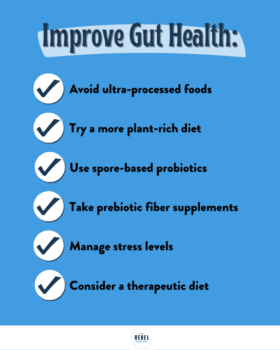
The microbiome responds rapidly to positive changes in diet and lifestyle habits. However, the reverse is also true. Long-term repair and balance take time and consistency, especially if the microbiome is compromised.
A comprehensive regime that addresses all the factors that affect the microbiome is the only way to see lasting change. And the results will speak for themselves. A healthy microbiome will help you look and feel better and have the energy to live the kind of life you’ve always wanted.
If you want to dive even deeper into the microbiome, check out our Microbiome Master Class. Taught by sixteen of the world’s leading experts in gut health, you’ll learn the details on exactly how to optimize your microbiome to radically improve your health and well-being.
ZenBiome™ Sleep is formulated to help clients deal with occasional...
An Exclusive Course with 10 Years of Microbiome
If you’ve ever wanted all of Kiran’s best
The toxicity and Detoxification Masterclass covers a wide
19 Leading Experts Share Cutting-Edge Science, Effective Practices,
Autoimmune Masterclass brings together 17 of the world’s
If you get fatigued, flushed, or foggy after...
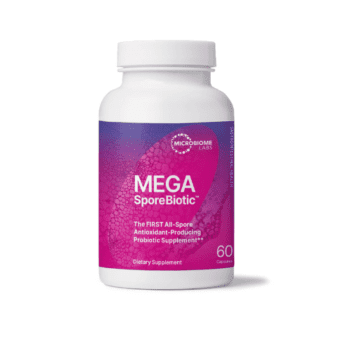
MegaSporeBiotic™ is a 100% spore-based, broad-spectrum probiotic shown...
MegaSporeBiotic™ Gummies are a 100% spore-based proprietary probiotic...
MegaMucosa is the first complete mucosal support supplement...

Meet Your Microbiome: The Human Microbiome and How to Optimize It On and in the average human, there reside approximately
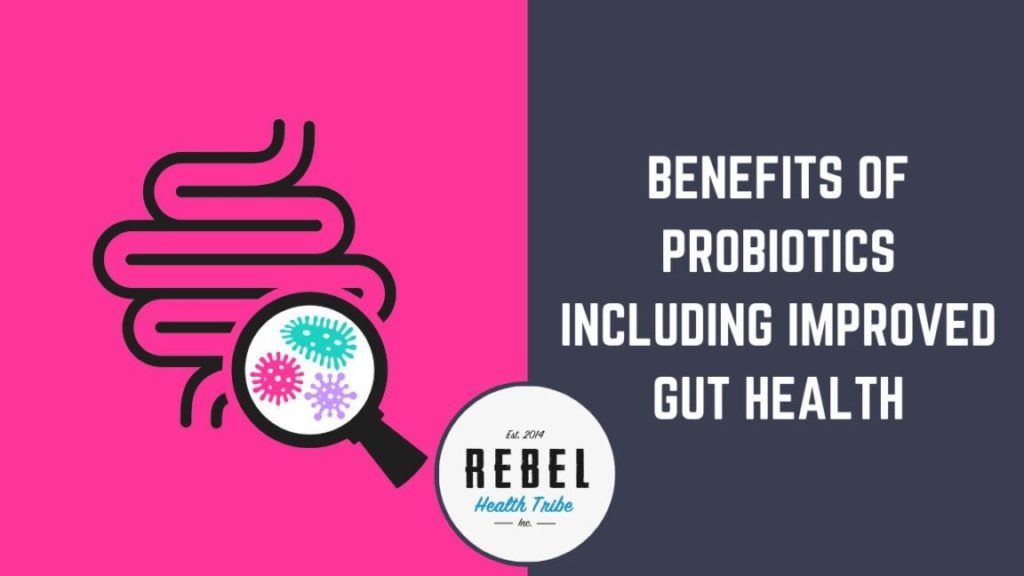
Benefits of Probiotics Including Improved Gut Health “Probiotics” has become quite the buzzword – with countless products and supplements proudly

Gut Microbiome Health and the Gut-Immune System Connection: Part 2 Lower GI The diverse community of microbes in your digestive

Gut Microbiome Health and the Gut-Immune System Connection: Part 1 Upper GI The message is out: gut health is critical